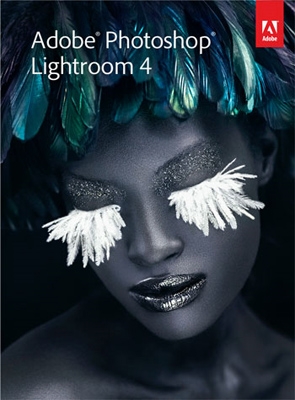Lightroom 4
One of the very early things I posted here were thoughts on processing, part of a few pages I created to share my thoughts from a non-photographers perspective – that is, someone more oriented towards getting nice shots of their kids than hanging their work in a gallery someday. That page essentially argued that processing your photos after taking them is of great value to non-photographers, in particular for fixing mistakes that a professional would never have made or would have caught before it was too late. I ran through the various tools I had tried, before expressing my tremendous satisfaction with Adobe Lightroom 3.
Well, Adobe Lightroom 4 became available yesterday, and while it’s box shot is mildly perplexing – I’m not sure it’s really representative of what most are likely to turn to Lightroom to create; in fact, you can’t really create images like that in Lightroom unless you stick feathers into people’s eyes for real – it’s phenomenal and well worth the purchase.
How can I be so sure just a day after release? No, it’s not because I used the beta extensively or anything to that effect. It’s that I thought it was fantastic before – and Lightroom 4 takes nothing away, while dropping the price by half to $149 (for a full copy). Even if nothing was new (and a lot is), it supports the old process version and tools, so at an absolute minimum, it’s a half-price version of Lightroom 3. I understood that $300 for software might be a lot to ask if you spent a total of $300 on your compact camera, but at $150, it’s cheaper than almost any lens or accessory you could buy for even an entry-level SLR – yet the capabilities it provides are profound. Especially if like me, you don’t do everything (or anything) perfectly in-camera when shooting.
There’s a good review up at dpreview.com that’s well worth reading, especially if you want to see what’s different between LR3 and LR4. Though if you have LR3 (or any prior version), it’s hard to imagine that it’s not worth the $79 upgrade price, because LR4 adds a large number of very significant features:
- Reworked basic controls. I struggled to see and figure out when to use Exposure vs. Brightness; people made entire videos on that topic. The new panel makes a lot more sense, and for black levels, also seems to provide a lot more control. It’s definitely easier on new users!
- Books! I haven’t tried this yet, and it sounds like a v1.0 attempt, but I’ll bet it’s a ton better than my recent experience with the software Photobook Canada provides – and it creates books that are publisher independent. It takes many hours to put together a book, and while some publishers supported PDF for a while, many didn’t and your books were locked into their service. Want a reprint in 10 years and they’re out of business? Too bad. I hope Adobe really iterates and makes this feature top-class.
- Geotagging! I stopped Geotagging when a bug in Picasa destroyed EXIF data on a whole batch of my JPEGs in an irreversible way (though all I really lost was the detailed information about what lenses I used, etc). Lightroom had no effective way to support this before. It’ll add some overhead to manually geotag my photos since I don’t carry one of those position logging devices, but at least now I can.
- Automatic Chromatic Abberation (CA) removal. I tried some photos where I struggled to control CA using LR3’s manual CA controls – and LR4 did a fantastically better job, instantly. This is really pretty huge if you’ve ever had photos that were marred by red/blue fringing (the kind that I think corrects easily).
- Video. I always wished there were some basic Lightroom-style adjustments like white balance that I could easily apply to a video without creating a new video editing project, and it looks like LR4 provides this. I haven’t tried this yet to know how well it works, but I intend to give it a shot, and it’s a worthwhile addition especially now that most current cameras do competent video.
- More local adjustments, including noise reduction & white balance. I’ve never wanted to do local noise reduction. But when you light a face with flash against a background with natural light, it did make you wish for this sometimes.
- Reduced Clarity halos. You had to be really careful in LR3 about pushing up Clarity because of the halos it would create on high contrast edges. Reviews don’t seem to make a big deal of this, but if it bothered you like it bothered me, you’ll really like this.
I think Lightroom was well worth what Adobe used to charge for it. At it’s new price, it’s a steal. That it comes with quite a few great new capabilities is just icing on the cake!
